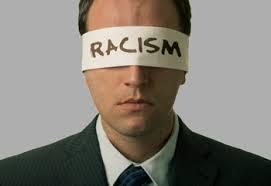
Professor Keeanga-Yamahtta Taylor Delivers Keynote at Hampshire College's 2017 Commencement Ceremony
Recent years have borne witness to increasingly organized attacks on college and university faculty who are critical of, and public about, social inequality. Attacks seem most virulent when the faculty are people of color and/or when they critique white supremacy. Consider a string of recent events:
- In May 2015, then incoming professor Saida Grundy tweeted about white college males. Her academic department was broken into and defaced. She was branded as anti-white, she faced calls to be fired, and her life was threatened.
- In June 2015 professor Zandria Robinson tweeted statements about whiteness and the confederate flag. She was publicly defamed and her life was threatened.
- In May 2017 professor Tommy J. Curry was attacked after bits from a lecture on violent opposition to white supremacy went viral. His life and job were threatened.
- Also in May 2017, professor Keeanga-Yamahtta Taylor gave a commencement speech at Hampshire College in which she critiqued the president. She, too had her life and employment threatened.
- And just days ago professor Johnny Eric Williams shared a story on social media about responses to white bigotry. His own brief synopsis of it was twisted, taken out-of-context, and simply fabricated. These lies qua criticisms were spread far and wide so that Connecticut state lawmakers called on Professor Williams’ employer to fire him. He received threats of injury and death. His employer closed campus after threats of violence.
Notice a pattern? There is a playbook here.
- A professor makes a comment (or even a parting reference) that is critical of racism, white supremacy, and/or racial inequality and those that would support, or otherwise benefit from, those systems.
- The comment(s) is(are) taken out of context, twisted, misappropriated, reframed (or simply invented) as a supposed exposé on a professor who advocates killing, harming, or otherwise attacking individual white people.
- Activists and their media wings (e.g., Campus Reform, The Blaze, The Daily Caller, etc.) organize to oppose the faculty member through drumming up people to a) verbally attack the professor on social media, b) contact lawmakers for censure/firing, c) contact employers for censure/firing, d) threaten injury or death to the faculty member, e) doxing, and/or f) other forms of intimidation and harassment.
- The faculty member is advised to remove/make private their public posts, lecture, or statements on social media and the web and/or to issue some kind of apologetic statement.
- The larger national public, now ignorant of the backstory and actual truth or context of the faculty member’s original message, decry the professor for their immorality and/or inaccuracy.
- Repeat Step 3 (with greater intensity).
- The faculty’s employer may a) capitulate to calls for firing/censure, b) ask the faculty member to apologize, c) go mute, d) defend the faculty member, or e) use the incident as an excuse to “investigate” the faculty member at a later date.
- In the aftermath, the genesis of the media spectacle (not the faculty comment itself, but the attacks on, misrepresentations of, and/or fabrications of, that comment) are lost while people on all sides of the issue debate notions of “academic freedom,” “conservative ignorance,” and/or “liberal elites” (the latter being one my favorites since it conjures up vice-president Spiro Agnew’s 1969 criticism of anti-war academicians as “an effete core of impudent snobs who characterize themselves as intellectuals”).
This playbook nearly always fails to lead us down a path to recognize these attacks as systematic physical, verbal, and symbolic witch-hunts on faculty of color and/or fishing expeditions to silence discourse that recognizes and critiques manifestations of racism and white supremacy.
So, let’s call all this what it is—bullying by way of influence and indirect force. And in some cases—terrorism by way of violence, threats of violence, intimidation, and/or direct force in the pursuit of racialized and gendered ideological ends.

I know full well. It happened to me, too.
In early 2017 I was scheduled to give a talk that examined the role of overt and subtle racialized messages to magnetize white support for particular political parties and political platforms and how those strategies played a role in the 2016 election. For instance, research indicates that racism against people of color correlated much more closely with support for Trump than did attitudes about economic dissatisfaction, even after controlling for political partisanship and political ideology. As I recently wrote: “It’s not a matter of whether race trumps (pardon the pun) either economics or political ideology (or vice versa), but how these voters interpret the world through the lens of Whiteness.”
Regardless of these facts, groups like The Blaze, Campus Reform, and others discovered my planned talk and mispresented my research. Tucker Carlson caught wind of the discussion and invited me on Fox. I accepted and after a lively back-and-forth, “#matthewhughey” was a thing on twitter. I was called every demeaning thing under the sun on social media and in over four hundred emails, nearly fifty voice mails, and even a couple dozen “snailmail” letters. A calculated strategy was organized whereby university administrators were inundated with regular phone calls for my firing. A campus protest was even planned (But it snowed and didn’t happen. Fair-weather activists, I suppose). I even received a couple death threats. Campus detectives got involved. Local police had to patrol my home.
Such bullying and terrorism (sometimes coupled with the complicity of institutional pressures and interactional abandonment by would-be-colleagues) comes in part from what we might call a “white crisis.” Many whites today, just as in other reactionary historical periods, believe they have been cheated and given an unfair shake. And many are right. But they are blinded to the cause of the slings and arrows of a harsh and unfair world and in the darkness see anti-white oppression.

Many express these frustrations in workplace slurs and epithets, disdain for policies like affirmative action, beliefs that any gains by people of color exist in zero-sum relation to white comfort and security, and in the resentment of highly educated university faculty of color who dare criticize one of the few things they believe cannot be taken—whiteness.
This crisis—or what has been called “white fragility”—is a direct result of the extraordinary claims of superiority that cannot be attained. A scapegoat must be provided: enter those “elite” professors who are sheltered from the struggles of the “real world” in their “ivory towers”—an all too easy target in the age of social media and alternative facts.
What are some solutions, or at least pathways to them?
- Providing legal sanction and remedy. Let’s stop pretending that we don’t already restrict speech for issues we deem harmful to the public good: from the regulation of copyright laws, pornography, film, and even public appeals for assistance à la “panhandling” to “advertising, obscenity, slander, libel, and inciting lawless action” as sociologist and legal scholar Laura Beth Nielsen recently penned. It is beyond time to lay bare the white crisis mechanisms that drive our inability to regulate hate speech or “disparaging” trademarks in order to protect marginalized people at least as much as we protect capital and property.
- Engaging in more critical education on both the immorality and wasteful dysfunction of bullying and terrorism. Our universities have the resources, from philosophy to economics and from literature to history, to demonstrate the ethical hypocrisy of any “civilization” that values hateful rhetoric against already materially marginalized people, alongside the measurable and harmful physical and cognitive effects and wasted resources of an unchecked “free speech” regime that favors the already powerful.
- Affording tangible protection for those who dare to confront the white crisis. For the aforementioned, and many others unnamed, these events are not about speech in a vacuum, but result in actual attacks. And there’s often no place that is safe. In many cases, people have to fend for themselves without intuitional protocol or resources to protect life and limb.
Until we call these attacks what they are—singularly conceived, organized, and executed inquisitions to harm faculty that challenge white supremacy and patriarchy—can we actually have any hope that a change is gonna come.
